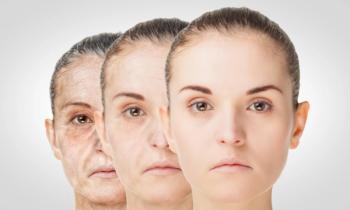
- Pharmaceutical Technology-07-02-2009
- Volume 33
- Issue 7
Opportunities and Challenges in Pharmaceutical Nanotechnology
While regulators begin to address nano-based drugs, industry should get its risk data ready.
Almost everyone agrees that the opportunities for nanotechnology in pharmaceutical manufacturing and development are vast and that nanotechnology as a platform for new technology development is potentially larger than the plastics industry of the mid-20th century. But nobody knows just how far-reaching nano applications may be for the pharmaceutical industry.
David W. Hobson
A few things are clear. The pharmaceutical industry has embraced nanotechnology. Nanotechnology represents a platform for developing revolutionary changes and improvements to many different aspects of pharmaceutical manufacturing. Also, the rate of nanotechnology discovery is proceeding more rapidly than practical applications can be found.
The pharmaceutical industry looks to nanoscale materials and nanofabrication to provide new and unique opportunities to improve drug design, create new patent opportunities, and streamline development. But concerns about safety have delayed the introduction of some nanotechnologies such as carbon nanotubes into the industry. Governments worldwide are developing recommendations and procedures for reporting the physicochemical characteristics and potential adverse effects of nanomaterials.
Pending regulations
In September 2008, the US Food and Drug Administration held a public meeting to gather information about nanofield developments in regulated products and to discuss whether existing agency guidance is sufficient for such products. Meeting participants offered a mixed response. Some asserted that, because pharmaceutical products, whether or not they contain nanotechnology, are always evaluated on a case-by-case basis, FDA guidance may not be not critical. Others said that more guidance may be necessary for devices, foods, and cosmetics containing nanomaterials.
Participants also disagreed on how to define a "nanoparticle." This definition could become the largest initial challenge facing FDA and other regulatory agencies working on nanotechnology standards. Even within the nanoindustry, the lines can blur when trying to determine whether something is nano or not.
Although FDA has not changed its guidelines for nanoproducts to date, in March 2009, the agency unveiled an initiative with the Houston-based Alliance for NanoHealth (ANH) and its eight member institutions to help speed development of safe and effective medical products that incorporate nanotechnology. Working under a Memorandum of Understanding, the FDA–ANH Nanotechnology Initiative will work to expand knowledge of how nanoparticles behave and affect biologic systems. The initiative also will facilitate the development of tests and processes that might mitigate the risks associated with nanoengineered products.
The US House of Representatives's Science and Technology Committee passed the National Nanotechnology Initiative Amendments Act of 2009 (H.R. 554) in February. The act is aimed at gaining a better understanding of the health and safety risks associated with nanomaterials that may enter the marketplace. H.R. 554 parallels an effort by Canada to become the first nation to require companies to list nanomaterials used in products for risk evaluation and echoes calls by Australian unions for a public registry of nanocompanies and full labeling to protect workers. It is not yet clear how these legislative efforts may affect raw materials and other nanoproducts of interest to the pharmaceutical industry.
Related standards
In the meantime, industry should keep an eye out for reporting recommendations and procedures for submitting mandatory documents such as those required by the US Toxic Substances Control Act and the European Union's Registration, Evaluation, Authorization, and Restriction of Chemical substances (REACH) program. Manufacturer Material Safety Data Sheets also will likely require reporting for certain nanomaterials.
As more scientific data emerge regarding the potential health risks of nano-based products, other formal measures may be imposed as well. These measures would likely include guidance on environmental monitoring in the workplace, the establishment of inhalation and skin-exposure limits to specific nanoparticles, and perhaps requirements for specific types of personnel health monitoring. including lung, skin, and immune-system effects.
Worker-safety precautions are already on the horizon. The National Institute for Occupational Safety and Health (NIOSH) recently published an "Interim Guidance for Medical Screening and Hazard Surveillance for Workers Potentially Exposed to Engineered Nanoparticles" (1). In this document, NIOSH makes the following recommendations:
- Take prudent measures to control exposures to engineered nanoparticles
- Conduct hazard surveillance as the basis for implementing controls
- Continue using established medical surveillance approaches.
Industry advantages
The emerging pharmaceutical nanotechnology industry is better off being proactive in its response to these emerging concerns by collecting its own product-safety data and using them to design new safe products and provide information to regulatory bodies. Waiting for FDA, the Environmental Protection Agency, and other authorities to collect and interpret such information on the basis of potential worst-case scenarios for broad classes of nanomaterials could unnecessarily delay the approval of products that would otherwise be proven safe. For early-stage companies, this information will be useful in attracting investors who are increasingly requiring companies to provide risk assessments of nanomaterials and products before they make a commitment. Comprehensive data also may help keep insurance rates down.
New regulations specific to nanotechnologies will most certainly be introduced in the coming years, marking a turning point for those seeking to commercialize their nanoproducts without oversight or accountability. Pharmaceutical nanotechnology will be no exception. By encouraging nanopharmaceutical companies to monitor themselves, the sector may become increasingly attractive to investors and insurance companies and less worrisome to the public, thus smoothing the path to commercialization.
David W. Hobson is chief scientific officer for nanoTox Inc., tel. 877.804.2828,
Reference
1. NIOSH, "Interim Guidance for Medical Screening and Hazard Surveillance for Workers Potentially Exposed to Engineered Nanoparticles," No. 2009-116, Feb. 2009,
Articles in this issue
over 16 years ago
Pharmaceutical Technology, July 2009 Issue (PDF)over 16 years ago
Using NIR to Move Bioprocessing into a PAT Frameworkover 16 years ago
East Meets West in Contract Biologics Manufacturingover 16 years ago
Down the Track: Different Speeds with Multiple APIsover 16 years ago
Integration of PAT in Biopharmaceutical Research: A Case Studyover 16 years ago
A Tale of Two Techniquesover 16 years ago
Manufacturers Face New Risk-Management Requirementsover 16 years ago
Can Industry Learn to Share?over 16 years ago
Next-Generation Facilities for Monoclonal Antibody Productionover 16 years ago
The Biopharmaceutical Manufacturing SurveyNewsletter
Get the essential updates shaping the future of pharma manufacturing and compliance—subscribe today to Pharmaceutical Technology and never miss a breakthrough.





